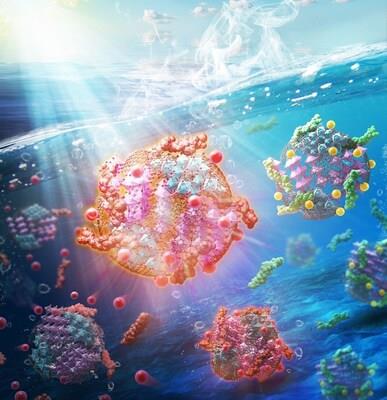
Nagoya Institute Of Technology Scientists Develop An All-In-One Catalyst For Solar-Driven Water Remediation
In a recent study, a research team comprising Dr. Kunihiko Kato, Dr. Yunzi Xin, and Mr. Yuping Xu, all from the Nagoya Institute of Technology (NITech), Japan, led by Associate Professor Takashi Shirai also from NITech, developed a novel method to synthesize multifunctional composite particles. These particles can single-handedly accomplish many essential functions for water remediation. Their study was made available online on October 1, 2024, and was published in Volume 16, Issue 4 of ACS Applied Materials & Interface on December 4, 2024.
The researchers employed a planetary ball mill and optimized the milling parameters to transform the commercially available powdered mixture of molybdenum trioxide (MoO3) and polypropylene into composite particles made of hydrogen molybdenum bronze (HxMoO3–y), molybdenum dioxide (MoO2), and activated carbon. "The proposed mechanochemical process surpasses other current approaches in terms of both energy efficiency and cost-effectiveness," highlights Dr. Shirai.
Through extensive experimentation, the research team demonstrated the many remarkable capabilities of their composites. First, these particles exhibited broad light absorption over the entire near-infrared–visible–ultraviolet range, allowing the photocatalytic degradation of a model organic pollutant. Interestingly, the composites also functioned as Brønsted acid catalysts and removed water pollutants even in the absence of light.
Additionally, the proposed catalyst exhibited plasmonic properties, leading to a marked photothermal effect that enabled rapid heating using sunlight. This could be leveraged to drive the fast evaporation of water with exceptional photothermal conversion efficiency. Finally, oxygen-containing carbons that remained as milling byproducts could adsorb and remove heavy metal ions from wastewater.
The research team plans to refine their ball milling process to produce similar all-in-one catalysts for water remediation and other applications. "Our developed technology has the potential to be applied to a wide range of oxides and plastics, and we anticipate that it will have varied applications, including enhancing the functionality of existing materials and upcycling waste plastics to secure the availability of drinking water," concludes Dr. Shirai.
Watch a video summarizing their research here:
Reference
Title of original paper: Multifunctional HxMoO3−y−MoO2/Carbon Composite Particles for Water Remediation
Journal: ACS Applied Materials & Interfaces
DOI: 10.1021/acsami.4c09169
Contact:
Azusa Yabugami
+81 52-735-5091
[email protected]
SOURCE Nagoya Institute of Technology

Legal Disclaimer:
MENAFN provides the information “as is” without warranty of any kind. We do not accept any responsibility or liability for the accuracy, content, images, videos, licenses, completeness, legality, or reliability of the information contained in this article. If you have any complaints or copyright issues related to this article, kindly contact the provider above.






















Comments
No comment